
Dance | Arts & Culture | Fairfield University | Arien Wilkerson
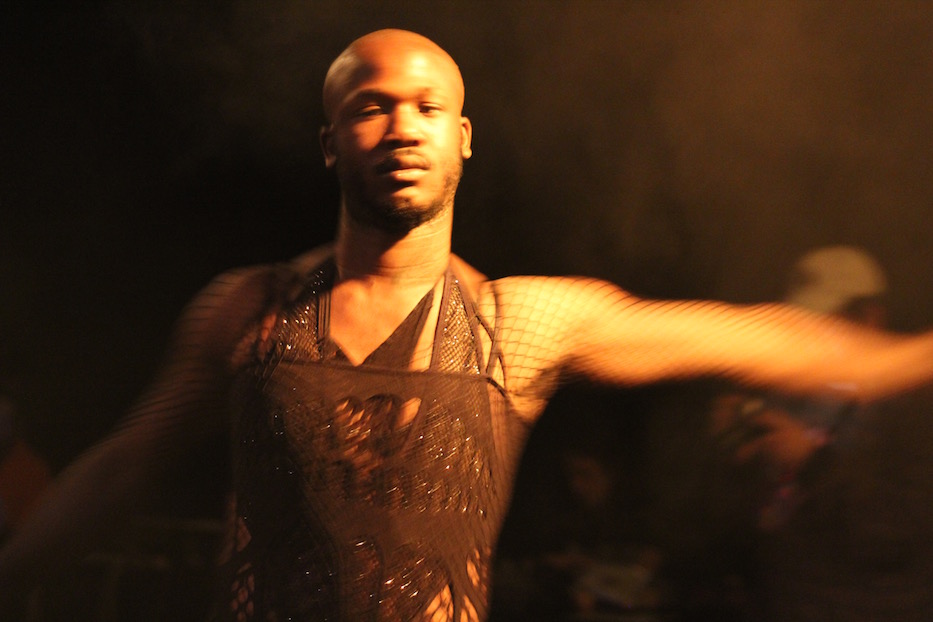
| Arien Wilkerson in Lovepiece. Lucy Gellman Photos. |
At first, it’s hard to tell where the music is coming from. Strings rise, shrieking and shorting intermittently. An undulating, echoing voice swells to meet them. Through shafts of red and green light, the set shifts into focus: a wooden bed frame several feet off the ground, lined with deep red tulle. A mattress and its cover, stretched and fixed to steel scaffolding with a net of multicolored yarn, rise into the air a few feet away. Flowers bloom wildly from both.
This is the landscape of Arien Wilkerson’s Lovepiece, a multimedia performance and installation running at the Regina A. Quick Center for the Arts at Fairfield University through Sept. 24. The world premiere of the performance, which Wilkerson is hoping to bring on tour, runs Monday at noon, 3 p.m. and 7 p.m. More information is available here.
“Lovepiece was kind of like a prompt within itself,” they said. “It’s about recovering from rejection and hate and humiliation and black and brown love, and every last thing that I had experienced, plus how I felt about my entire queerness, my family, all the men that I’ve had sex with, plus the fact that I’m HIV positive.”
The framework for Lovepiece began in late 2017, months after Wilkerson ended a two-year relationship with a poet and playwright they lived with in New Haven. At the time, the artist was just starting to tour a film for their installation Equators, later performed at the University of Hartford. Even as they threw themselves into their work, they struggled to come to terms with what had happened.
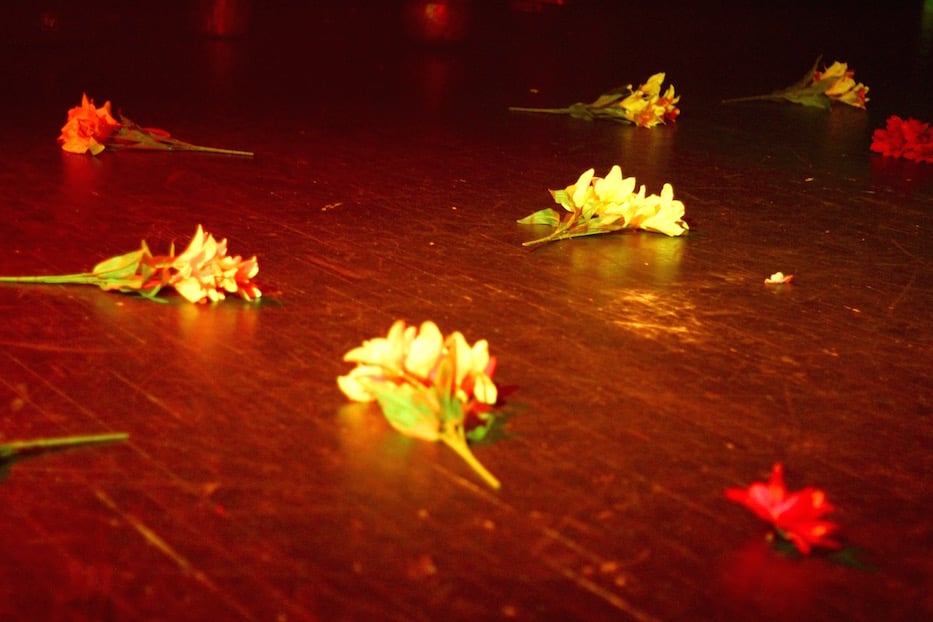
“I think it was the most earth-shattering breakup I’ve ever been through,” they said. “I don’t know how to unlove someone. I can’t like, not talk to someone that I’ve slept in the same bed with. I don’t know how to not care about someone. It was a huge hole that I felt was carved out of my entire body.”
And so, they threw themselves into work. In 2018, Wilkerson was touring Equators and developing their work Universal Womb, the latter of which received funding from the Connecticut Office of the Arts and the William Caspar Graustein Memorial Fund (other projects have received multiple grants as well, the information to which is available at Wilkerson's website). They bounced between Hartford, New York and Philadelphia, to which they are moving next month. They celebrated their birthday on tour. They compartmentalized until the breakup was just a droning sound at the back of their skull. And then in January of 2019, they crashed.
"I had no time to process all the things that I was feeling,” they recalled. “It was hard. And at the end of it, I was exhausted.”
But it was the kind of exhaustion from which creativity sometimes explodes in hard-fought fits and starts. In early 2019, Wilkerson convinced fellow artist domsentfrommars to move from Brooklyn to Hartford. They "went on a cute little purge," and disabled Facebook and Instagram. They got a therapist, and started talking about the breakup.
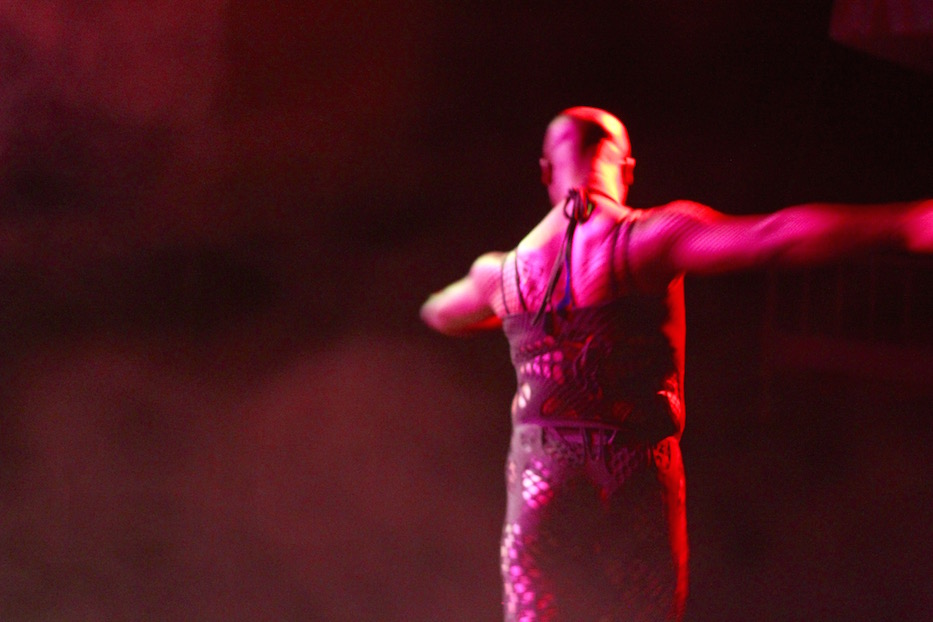
And then, slowly, they started drafting the piece. In particular, Wilkerson recalled, domsentfrommars encouraged the artist to dig deep on themselves, exploring parts of their own lived experience that had never made it into their work.
“I come from the land of make believe, and Arien’s always doing real issues that are conceptual,” domsentfrommars said in an interview Sunday. “But I just never saw them care about themselves or make anything personal. It almost feels like they can’t make anything personal because they haven’t done the work to just sit alone in a room with no music on, just sitting with yourself.”
Until Lovepiece. As the work came together, Wilkerson began to explore the eight types of love they had experienced both in the relationship and in life. There was eros (romantic love), phila (friendship love), storge (familial love and family love), mania (obsessive love, “which is the closest to how I love,” said Wilkerson), philautia (self love), agape (selfless love), pragma (enduring love), and ludus (playful love, or “cat and mouse, boy meets girl,” the artist said).
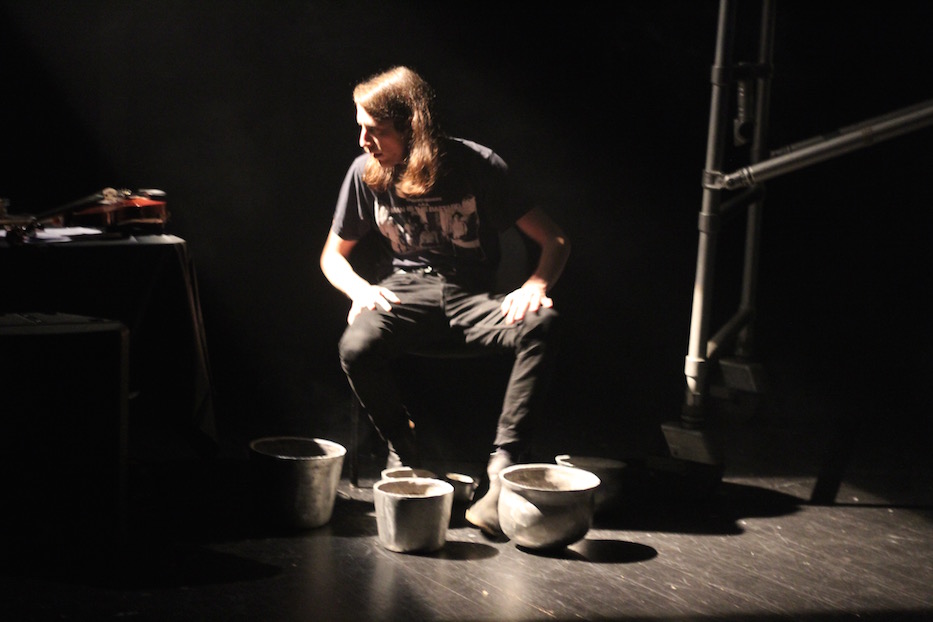
| Zach Rowden, with sculpted pots that he plays during the show. The pots, which double as nesting dolls, were designed by Yale MFA student Peyton Sarah Peyton. |
Wilkerson was intrigued by how easily one type of love intersected with another, and then another, and then another, just as their blackness, queerness, and HIV diagnosis do in their life and work. And so they developed eight prompts, loose structures on which movement and music could be based.
“There’s no narrative,” they said. “I did not want to tell this narrative from beginning to end about love, or about my life, I didn’t want to tell a memoir. You can’t tell a story without the recounting of someone else’s story. No matter what I say about [my ex] ... they have their own perspective on what has happened. And it’s gonna be different from mine. Their story or how the movie went down is gonna be different.”
As the piece evolved, the artist added in swelling vocals, classical and contemporary phrases, and floor work through which their body could become an instrument of its own accord. They enlisted the help of domsentfrommars, lighting and scenic designer Jon Paul LaRocco, New Haven drone musician Zach Rowden, and Hartford jazz musician and saxophonist Karim Rome, all of whom are not on stage during the performance.
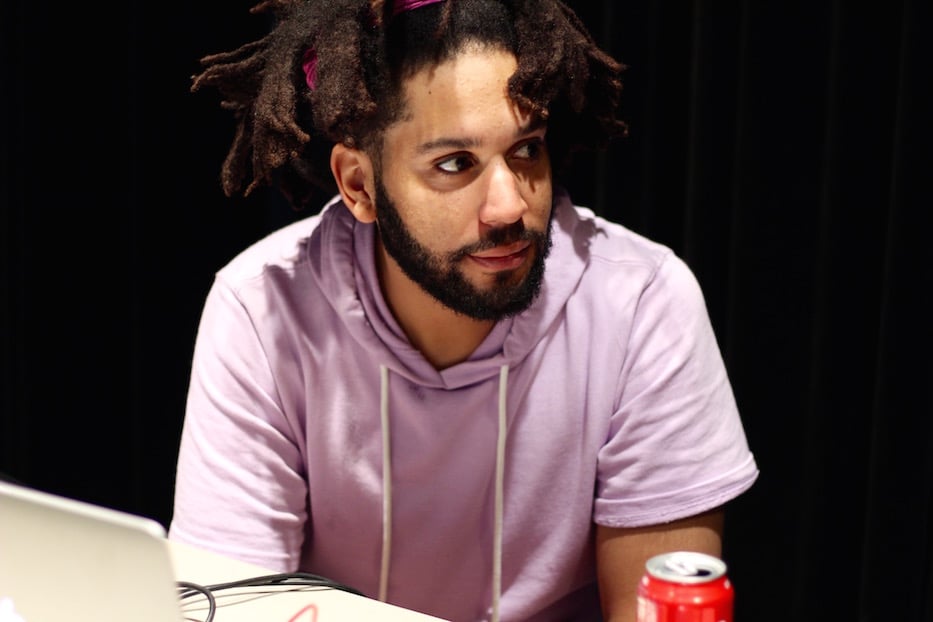
| Karim Rome. |
The set grew to encapsulate the mattress, mattress pad, and bed frame on which Wilkerson was laying when they found out that they were HIV positive. The title—on which Wilkerson said they still feel ambivalent because they hate the word “love”—references their ex-partner’s work in literature, poetry, and playwriting.
“Something about the work is way more subtle and refined, which took me a while to become,” they said. “I hate the fucking word love. But it couldn’t be anything else. I was like, I have to make a piece with the word love in it.”
Now, the show has come to life in vibrant, unsettling and intensely felt detail. In the Quick Center’s intimate black box theater, huge fake flowers are strewn over the floor, waiting for Wilkerson’s hands, feet, and mouth to lift them up and incorporate them into the piece. Fog rolls in from the ceiling and a space on the floor, chalky and billowing as Wilkerson crawls through it outlined in gold. Lighting cues from LaRocco turn the space into eight different universes, each of them overlapping at the edges and sometimes at the centers too.
As they crawl out beneath fog and scaffolding to one type of love, their muscles strain and pop against the light and shadow. Breath, almost grunted, becomes audible in the theater. Shift to another form of love, and shafts of red and green light are coming down on the artist, turning the space into another sort of world entirely.

As the types of love merge, Wilkerson shape-shifts on a dime. One moment, voicemail messages from the artist's friends, family members, and ex crackle and boom overhead, weaving themselves into the soundtrack. Another, and Los Ángeles Negros’ “Tres Palabras” runs right into a tape loop that sounds like Minnie Mouse on speed. Rome switches from sax to rap, drawing the audience in with Wilkerson’s concept of a situational, shifting score. Ariana Grande pipes in over the speakers, distorted.
Yet another, and Rowden and Rome launch into a back-and-forth that sounds ambient until it is suddenly dizzying, ready to soak the whole room in sound. Their relationship, a knot of deep-bellied and shrill notes, breaks and then repairs itself. Seated in a different part of the theater, domsentfrommars pushes in with transcendent vocals, echoing as if the artist are underwater and trying to break free.
There’s a heavy lean on improvisation: the eight types of love are never presented in the same order. In a brilliant move, LaRocco has set individual cues for each of them, enabling the ensemble to shift from one show to the next. In other words, Wilkerson said, “we created a lot of bases that we can fuck with,” while maintaining a series of structured entrances and exits.
Phrase work is never quite the same, as if the structure of Lovepiece is just a mere suggestion in this bigger relationship the audience calls life. And it works: by the time one exits the theater, they feel as if they have been to another country and back.
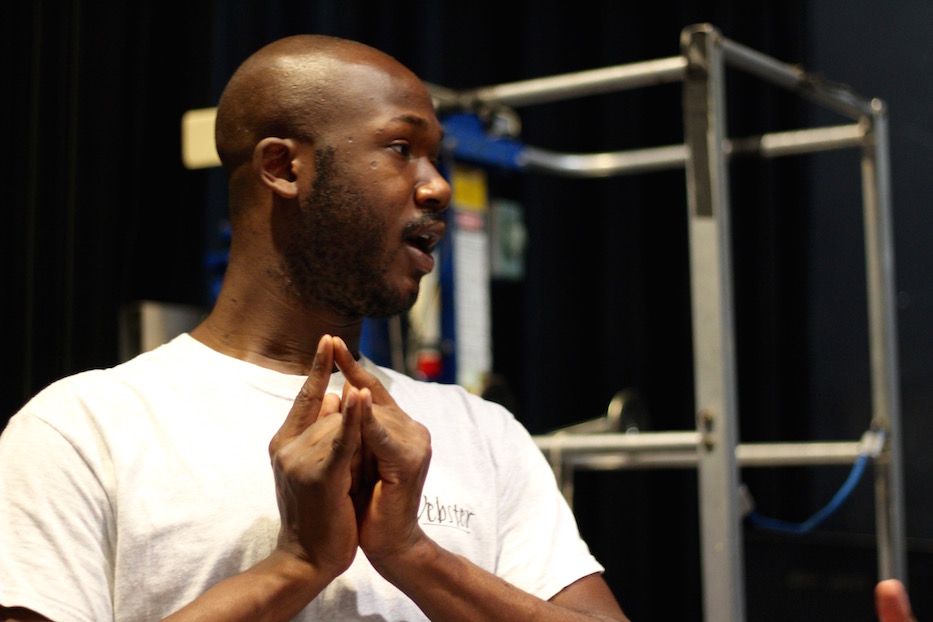

In part, it marks a radical departure from the artist’s other work, which has focused on on eco-consciousness, political activism, and the intersections of racial justice, climate justice, and educational justice. Wilkerson, with intense and sometimes furious beauty, comes forward willing to share more of themselves. It is highly collaborative: the piece centers Wilkerson's work on themselves, but cannot fully exist without the ensemble.
Indeed, there is no degree of remove and nowhere to hide. Ensemble members are part of the set. Chairs are assembled in a deliberate mess, à la Pina Bausch—meaning that the audience, too, becomes part of the Lovepiece.
But like recent work in Equators and Universal Womb, it is also intensely relatable. In watching Wilkerson navigate the stage, bed, and steel scaffolding with grace, joy and fury, members of the audience may be reminded of the pitfalls, play, joy and destruction in their own relationships. In listening to the voicemails, they may dig up something from their own life—a lover despised by their family members, or maybe a partner’s family that was unwelcoming. And they, like Wilkerson, may start working towards resolution.
“I’m not there yet, but I will be,” they said. “I definitely feel it in my body. I think the more I that I do this, I’m just going to get stronger, and stronger, and stronger with loving myself, and learning about love. I’m a manic lover. But in the entire show, I don’t go manic. It’s the one and only show where I stay calm.”
“I’m always going to be changing how I feel and who I love,” they added. “So every time I do it, I can think about how I feel and different things.”
To find out more about Arien Wilkerson and their company, TNMOT AZTRO, check out their website.

